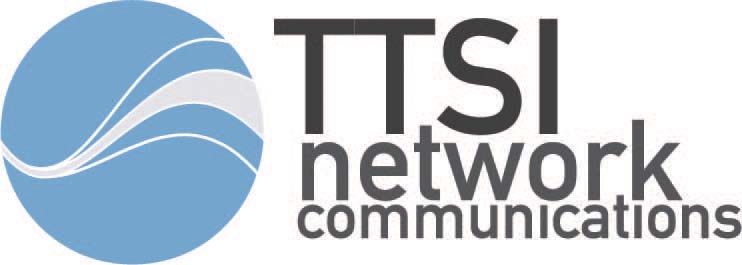ATM Systems Overview
Asynchronous Transfer Mode (ATM) is an International munication Union- munication Standardization Sector (ITU-T) standard for cell relay wherein information for multiple service types, such as voice, video, or data, is conveyed in small, fixed-size cells. ATM networks are connection oriented. This chapter provides summaries of ATM protocols, services, and operation. A private ATM network and a public ATM network both can carry voice, video, and data traffic.
Standards
ATM is based on the effortsof the ITU-T Broadband Integrated Services Digital Network (BISDN) standard. It was originally conceived as a high-speed transfer technology for voice, video, and data over public networks. The ATM Forum extended the ITU-T’s vision of ATM for use over public and private networks. The ATM Forum has released work on the following specifications: User-to-Network Interface (UNI) 2.0
UNI 3.0
UNI 3.1
ATM Devices and the Network Environment
ATM is a cell-switching and multiplexing technology that combines the benefits of circuit switching (guaranteed capacity and constant transmission delay) with those of packet switching (flexibility and efficiency for intermittent traffic). It provides scalable bandwidth from a few megabits per second (Mbps) to many gigabits per second (Gbps). Because of its asynchronous nature, ATM is more efficient than synchronous technologies, such as time-division multiplexing(TDM).
With TDM, each user is assigned to a time slot, and no other station can send in that time slot. If a station has a lot of data to send, it can send only when its time slot comes up, even if all other time slots are empty. If, however, a station has nothing to transmit when its time slot comes up, the time slot is sent empty and is wasted. Because ATM is asynchronous, time slots are available on demand with information identifying the source of the transmission contained in the header of each ATM cell.
ATM Cell Basic Format
ATM transfers information in fixed-size units called cells. Each cell consists of 53 octets, or bytes. The first 5 bytes contain cell-header information, and the remaining 48 contain the “payload” (user information). Small fixed-length cells are well suited to transferring voice and video traffic because such traffic is intolerant of delays that result from having to wait for a large data packet to download, among other things.
ATM Devices
An ATM network is made up of an ATM switch and ATM endpoints. An ATM switch is responsible for cell transit through an ATM network. The job of an ATM switch is well defined: it accepts the incoming cell from an ATM endpoint or another ATM switch. It then reads and updates the cell-header information and quickly switches the cell to an output interface toward its destination. An ATM endpoint (or end system) contains an ATM network interface adapter. Examples of ATM endpoints are workstations, routers, digital service units (DSUs), LAN switches, and video coder-decoders (CODECs).
An ATM network comprises ATM switches and endpoints.
ATM Network Interfaces
An ATM network consists of a set of ATM switches interconnected by point-to-point ATM links or interfaces. ATM switches support two primary types of interfaces: UNI and NNI. The UNI connects ATM end systems (such as hosts and routers) to an ATM switch. The NNI connects two ATM switches.
Depending on whether the switch is owned and located at the customer’s premises or publicly owned and operated by the telephone company, UNI and NNI can be further subdivided into public and private UNIs and NNIs. A private UNI connects an ATM endpoint and a private ATM switch. Its public counterpart connects an ATM endpoint or private switch to a public switch. A private NNI connects two ATM switches within the same private organization. A public one connects two ATM switches within the same public organization.
An additional specification, the Broadband Interexchange Carrier Interconnect(B-ICI), connects two public switches from different service providers.
ATM interface specifications differ for private and public networks.
ATM Services
Three types of ATM services exist: permanent virtual circuits (PVC), switched virtual circuits (SVC), and connectionless service (which is similar to SMDS).
A PVC allows direct connectivity between sites. In this way, a PVC is similar to a leased line. Among its advantages, a PVC guarantees availability of a connection and does not require call setup procedures between switches. Disadvantages of PVCs include static connectivity and manual setup.
An SVC is created and released dynamically and remains in use only as long as data is being transferred. In this sense, it is similar to a telephone call. Dynamic call control requires a signaling protocol between the ATM endpoint and the ATM switch. The advantages of SVCs include connection flexibility and call setup that can be handled automatically by a networking device. Disadvantages include the extra time and overhead required to set up the connection.
ATM Virtual Connections
ATM networks are fundamentally connection oriented, which means that a virtual channel (VC) must be set up across the ATM network prior to any data transfer. (A virtual channel is roughly equivalent to a virtual circuit.)
Two types of ATM connections exist: virtual paths, which are identified by virtual path identifiers, and virtual channels, which are identified by the combination of a VPI and a virtual channel identifier (VCI).
A virtual path is a bundle of virtual channels, all of which are switched transparently across the ATM network on the basis of the common VPI. All VCIs and VPIs, however, have only local significance across a particular link and are remapped, as appropriate, at each switch.
